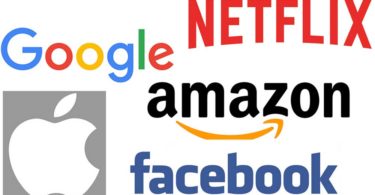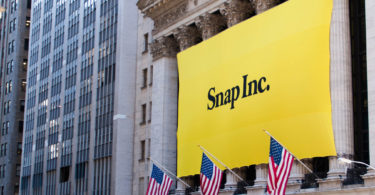With investing, few things are as rewarding as doubling your money. It doesn't matter how long I've been an investor, but when a stock crosses that 100% threshold, I still feel like celebrating. I'm betting I'm not alone and that you're also excitedly searching for stocks that have the potential to double.
Allow me to help as I believe the five stocks in this article could double over the next five years. So much could be said about each one, but for the sake of brevity, I've laid out each company's moat and what kind of growth can propel market-beating gains in the years to come.
IMAGE SOURCE: PINTEREST.
People clearly love the idea of a social media platform like Pinterest (NYSE:PINS), as shown by the company's quickly growing base of 442 million monthly active users and the lack of viable alternatives. Facebook launched an app called Hobbi to compete, but the social media giant quickly killed the project after it failed to get more than a measly 7,000 downloads, according to mobile-app tracker Sensor Tower. Whether it's because of its first-mover advantage or something else, people seem to prefer Pinterest over other options, meaning this company is doing a good job defending its niche.
One of the keys to Pinterest's long-term success is its base of international users. In the third quarter, they accounted for 78% of all users on the platform but only 16% of the revenue. The company is still staffing offices in places like Europe so it can start making advertisers abroad aware of how to use the platform.
And it plans to start monetizing Latin America this year, showing just how early we are in this story. As the monetization of its largest user base picks up speed, it's not hard to see how Pinterest can grow revenue at an outsized pace — to say nothing about ongoing monetization progress in the U.S.
The stock went up over 250% in 2020, but Pinterest is still a buy in 2021.
IMAGE SOURCE: GETTY IMAGES.
United Rentals
Equipment rental company United Rentals (NYSE:URI) isn't a household name, and that's a shame. Since the beginning of 2011, the stock has returned over 1,000%, one of the best performers of the last decade. And yet, unlike many other high-fliers, the company is still relatively small with just an $18 billion market cap, and shares are relatively cheap at 20 times trailing earnings.
One reason to love United Rentals is its scale. According to its October investor presentation, the company is the market-share leader for equipment rentals in North America with 1,170 locations in 49 states and all 10 Canadian provinces. This scale is hard to match and gives the company great flexibility. The COVID-19 pandemic impacted regions differently, and United Rentals has been able to take advantage of this dynamic in regions where business remained strong. As a result, it didn't close a single branch or lay off a single employee because of the coronavirus.
United Rentals is a cash flow machine. It generated $1.57 billion in free cash flow in 2019 before the coronavirus affected its business. In 2020, it cut capital expenditures, which has only bolstered free cash flow even more as the company generated over $2 billion through the first three quarters of 2020. Expect that to pull back when management resumes spending. But cash flow should remain strong, allowing the company to aggressively buy back stock and acquire smaller competitors. Both moves can create meaningful shareholder value in the long term.
IMAGE SOURCE: GETTY IMAGES.
Starbucks
At this point, Starbucks (NASDAQ:SBUX) is almost synonymous with coffee, a drink that's a sacred daily ritual for hundreds of millions of people. With more than 32,000 locations worldwide, healthy profit margins, and same-store sales that have increased almost every year since going public 30 years ago, I don't think any newcomer will dethrone Starbucks anytime soon.
To the contrary, Starbucks is looking to do some dethroning of its own. At the company's investor day presentation last month, management laid out plans to have 55,000 locations worldwide by 2030, which would make it the largest restaurant company in the world. It will get there with a mix of growth in traditional locations and new delivery-only shops, maximizing profit potential on a case-by-case basis. Not only should this drastically grow both revenue and profits over the next decade, but it also gives Starbucks room to keep growing its dividend, which has doubled over the past five years.
IMAGE SOURCE: GETTY IMAGES.
Floor & Decor
Like United Rentals, Floor & Decor Holdings (NYSE:FND) doesn't make headlines in the investing world, but this flooring specialist is building a defensible position in the home improvement space. Heavy (and sometimes fragile) flooring appears to be immune from e-commerce disruption. And the company's warehouse-style stores average 77,000 square feet in size, providing unmatched in-stock flooring options compared to more general home-improvement stores like Lowe's and Home Depot.
Floor & Decor was founded only 20 years ago but has already grown to 128 locations, generating over $2.2 billion in trailing 12-month revenue. Net sales are actually up 12% year over year in 2020 despite the COVID-19 pandemic.
This growth is in large part thanks to a sizable and loyal professional customer base. And growth shows no signs of slowing — management plans to raise its store count 20% annually until reaching 400 locations, providing fuel for at least six years of stellar growth.
IMAGE SOURCE: GETTY IMAGES.
Lemonade
It only went public in 2020, but insurance company Lemonade (NYSE:LMND) is already catching the market's attention. It's not hard to see why. People typically don't like dealing with their insurance company, but Lemonade is trying to change that. Its pricing structure is simple: It keeps 25% of premiums for itself, excess claims are passed on to reinsurers, and leftover premiums are donated to the customer's charity of choice. Not only could this endear consumers to Lemonade since their favorite causes benefit, but it also reduces incentive for fraudulent insurance claims.
Because of this clear alignment with customer values, Lemonade seems poised to take market share from its larger rivals. It has already reached one million active customers after launching a little more than four years ago. And since this is a $5 trillion market, Lemonade is years away from reaching any kind of ceiling.
There are two particularly good reasons to be excited about Lemonade's customer growth. First, since it's a tech-driven company, it can gain operating leverage by serving a large customer base with fewer employees. It estimates it can operate with a 2,000-to-1 customer-to-employee ratio, whereas other insurance companies need one employee for every 150 to 450 customers.
Second, its artificial-intelligence software should get smarter with more customer data, improving its gross-loss ratio, a key to unlocking long-term profitability. Indeed, this is already happening, meaning everything with Lemonade is trending in the right direction.
IMAGE SOURCE: GETTY IMAGES.
How long will it take?
Hopefully you already noticed, but I've presented multiyear business trends for each company that could cause their stocks to double. If you were hoping for hot tips to double your money over the next week, month, or year, I'm sorry to disappoint you. I don't have insight into the short-term returns for these five stocks.
Indeed, in the short term, any one of them could trade lower than where they are right now, especially considering that, with the exception of Lemonade, they are all within 7% of their all-time highs. Furthermore, as with any stock, there are bear arguments to be made, which were left unexplored here.
These concerns aside, I believe all five of these companies are well positioned for the long term and can deliver enough growth to see their stocks double over the next five years or so.
Should you invest $1,000 in Starbucks Corporation right now?
Before you consider Starbucks Corporation, you'll want to hear this…
Guess Who's Going Bankrupt
Featured Sponsored Content
If you thought the store closures and bankruptcies in 2020 were surprising… you haven't seen anything yet.
Something much bigger is just around the corner.
Few Americans even know that any of this is happening…
Those who do know don't have a clue what to do about it, or how to prepare for what's next.
If you're worried about this situation and its implications for American society, I strongly urge you to listen to this message.
Which dominoes are the next to fall and what can you do to prepare?








